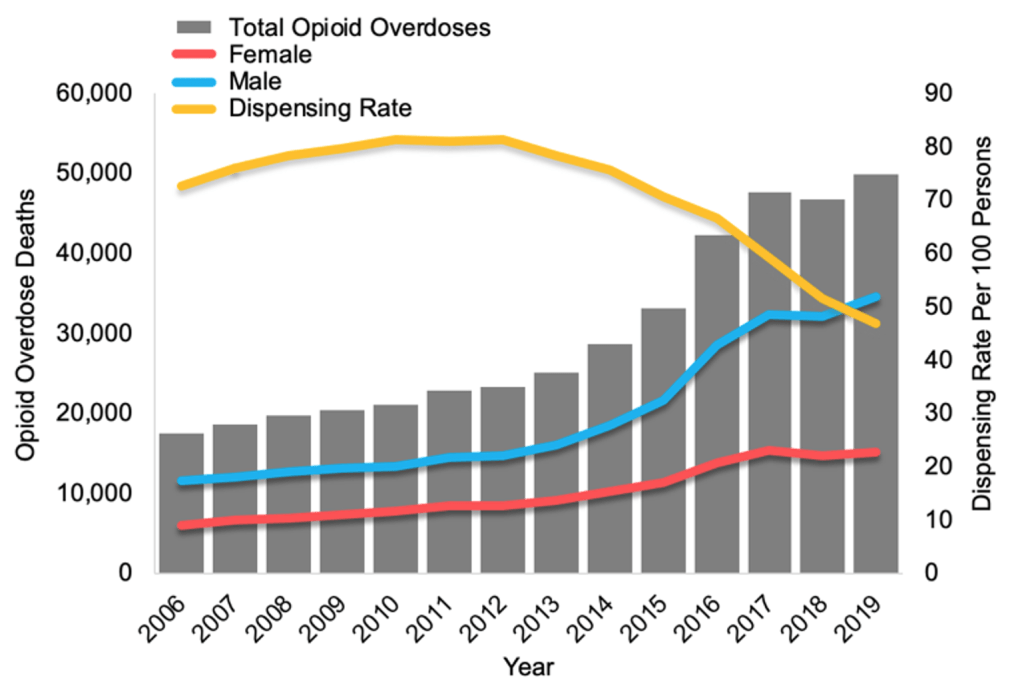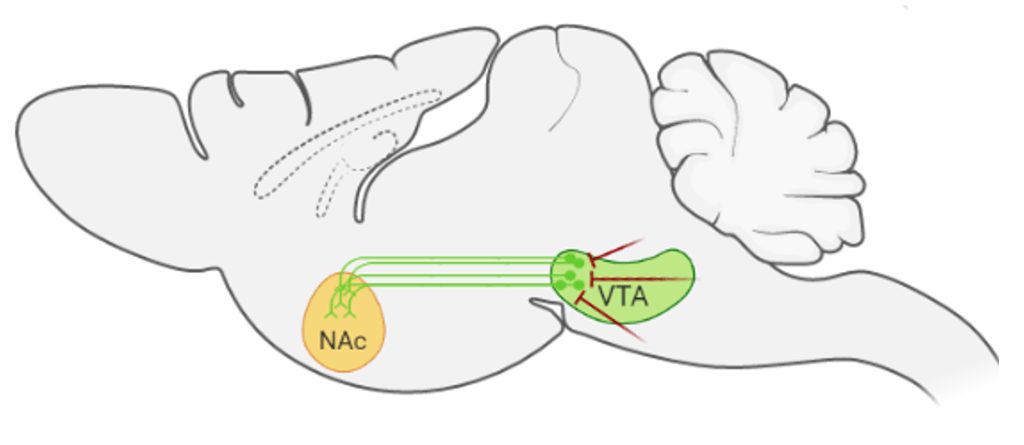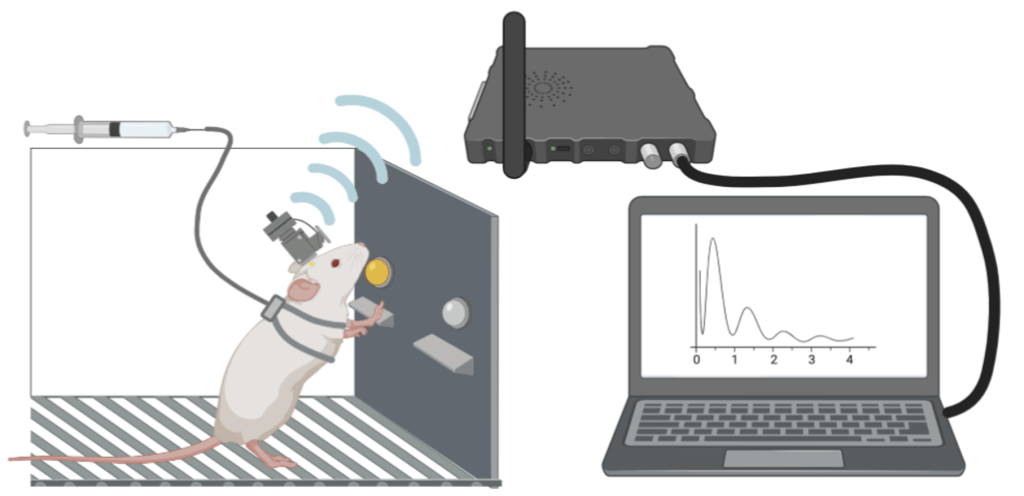Pain Affects Opioid Use in a Sex-dependent Manner

Over 20% of US adults suffer from chronic pain. Opioid pain medications are potent analgesics often used to treat pain symptoms but are highly prone to abuse. In recent years, CDC reports of declining opioid dispensing rates have coincided with alarming increases in opioid overdose deaths. Accumulating evidence indicates that the effects of pain on opioid misuse are sexually divergent. Although females exhibit higher sensitivities to pain, males are more likely to escalate their opioid doses, misuse prescriptions, and meet diagnostic criteria for opioid use disorder. Moreover, opioid overdose deaths in males are consistently two-fold greater than that of females. These findings suggest that male pain patients are more vulnerable to negative outcomes associated with opioid use. Thus, identifying sexual dimorphisms underlying maladaptive opioid use is critical to improving patient outcomes.
Pain, Opioids, and Mesolimbic Dopamine Function

Despite the sexually divergent trends in opioid misuse liability, the putative mechanisms underlying these differences remain largely unclear. One key regulator of reward processing and motivation is the mesolimbic dopamine system. Opioids are highly prone to abuse due to their ability to increase dopamine release from the ventral tegmental area (VTA) into the nucleus accumbens (NAc). In contrast, our lab and others have shown that pain blunts VTA dopamine activity by increasing inhibitory tone on VTA dopamine neurons. It is unknown whether the effects of pain on opioid use are mediated by sex-specific neuroadaptations within the mesolimbic circuitry. Accordingly, our lab investigates how pain alters neurobiological substrates of the mesolimbic dopamine system during long-term opioid use in a sex-dependent manner, and determines whether these functional changes are predictive of, and necessary for, opioid misuse.
Current Projects

- To examine the influence of pain in our experiments, we use Complete Freund’s Adjuvant (CFA) to produce persistent inflammatory pain.
- We measure nociception and opioid analgesia by examining thermal and mechanical sensitivity using the Hargreaves and Von Frey assay, respectively.
- We use rat model of intravenous fentanyl self-administration and cue-induced relapse that recapitulates the sex differences observed in clinical populations.
- Using typical vaginal cytology, we track estrus cycling in females to examine the potential influence of reproductive hormone fluctuations on behavior.
- To target discrete neuronal populations based on their neuropeptide expression and/or connectivity with other brain regions, we use a combination of transgenic Cre-driver rat lines and Cre-dependent viral vectors containing genetically encoded calcium indicators (such as GCaMP) or designer receptors exclusively activated by designer drugs (DREADDs) to measure activity or manipulate target cell populations, respectively.
- To measure real-time response-contingent calcium dynamics in target cell populations, we use wireless fiber photometry while rats are undergoing our self-administration paradigm. This provides us with a proxy of neural activity triggered by volitional drug-taking and allows us to examine how pain, lack of drug, or relapse behavior alters these dynamics over time.
Written by Jessica Higginbotham.